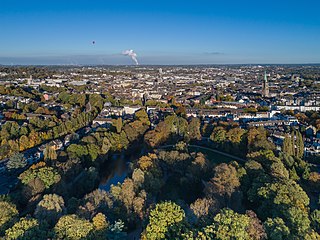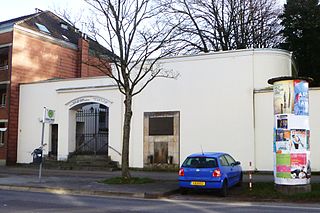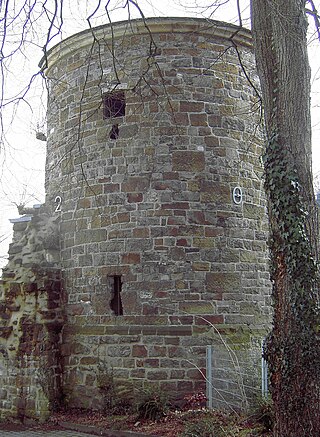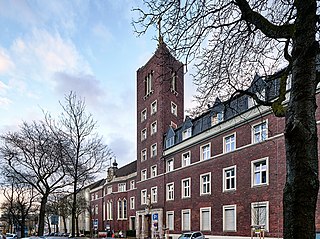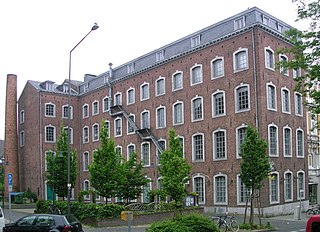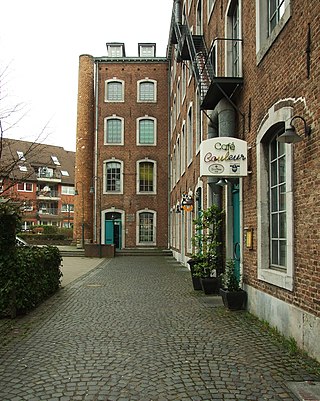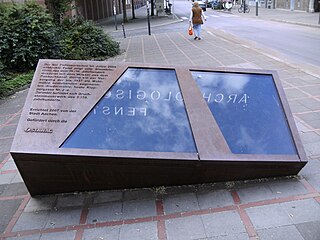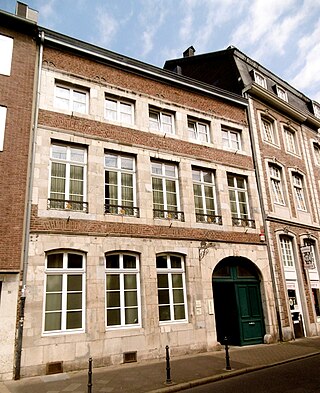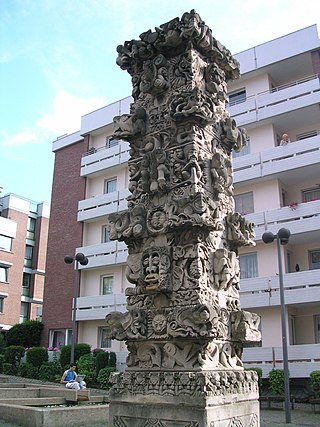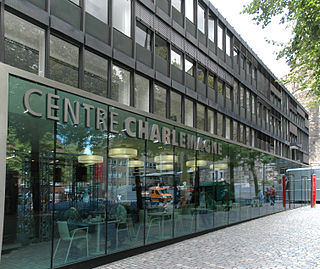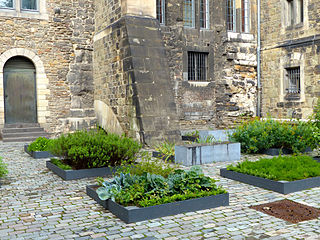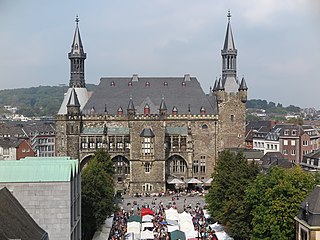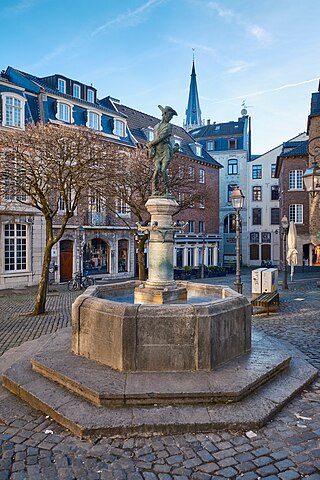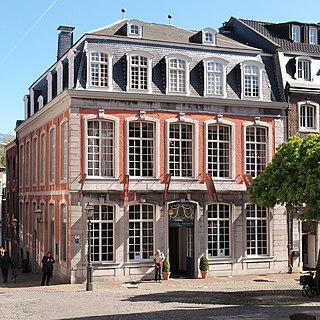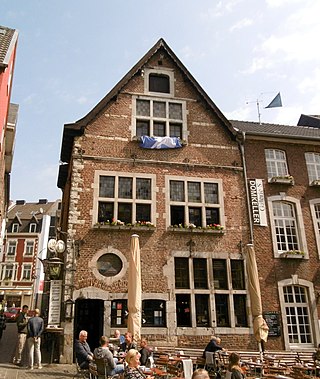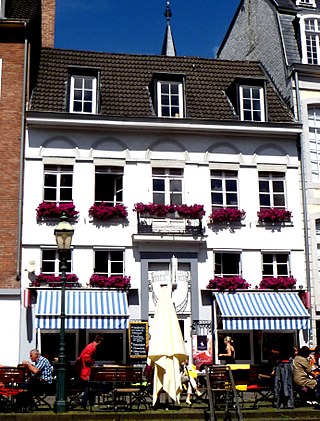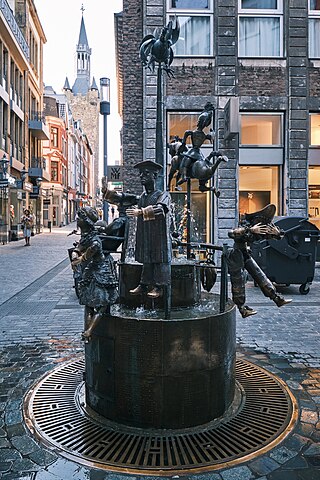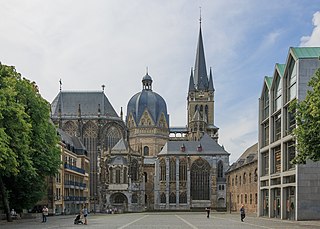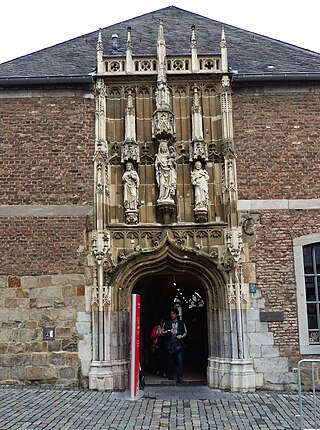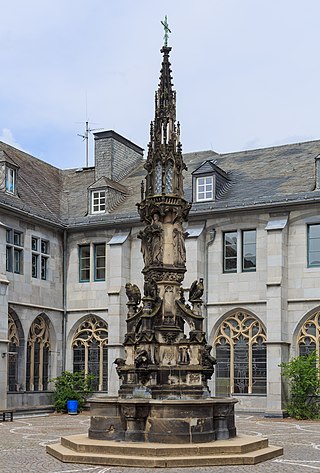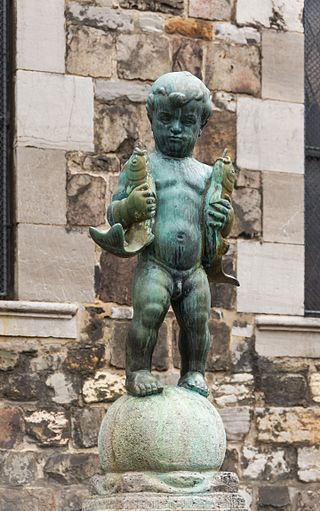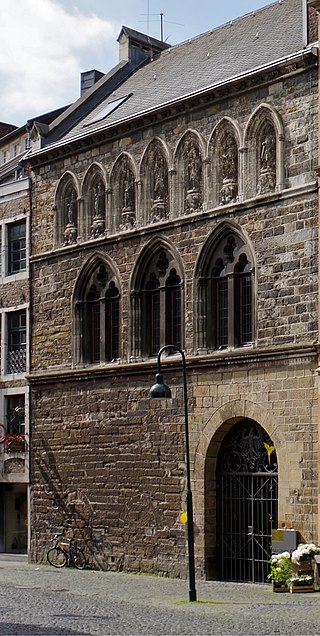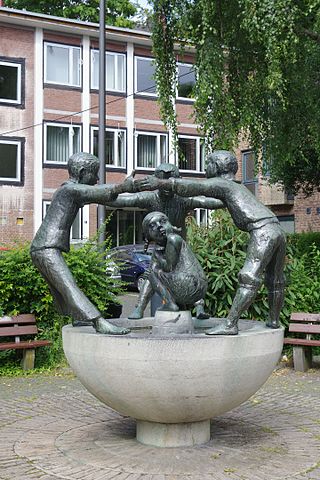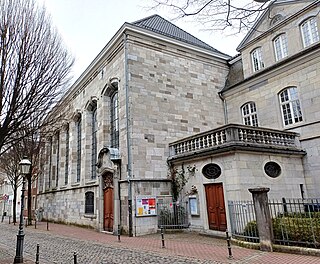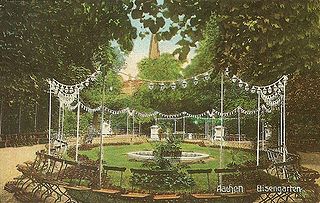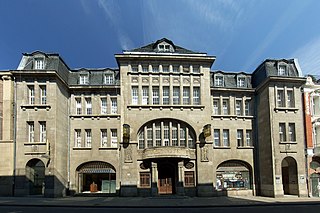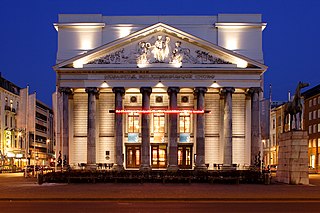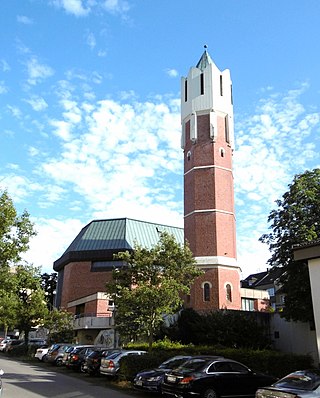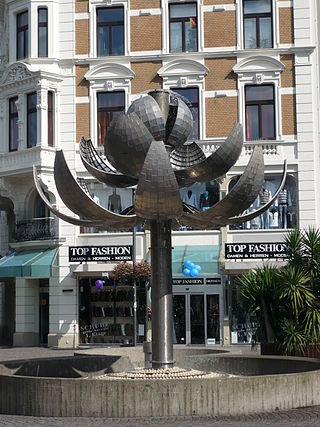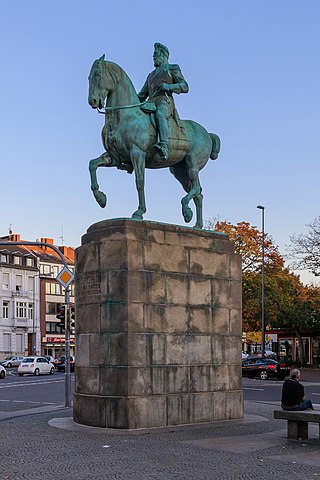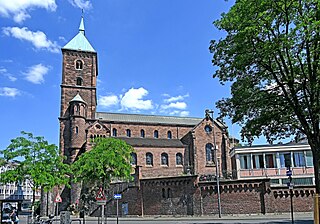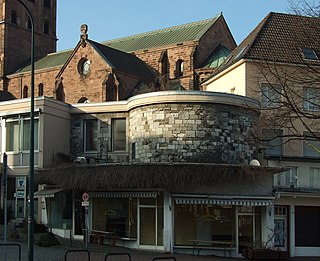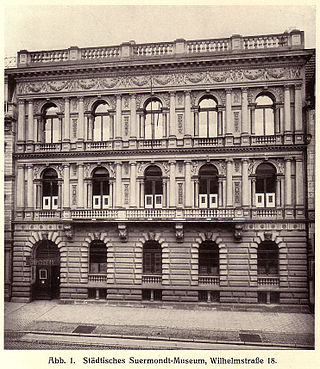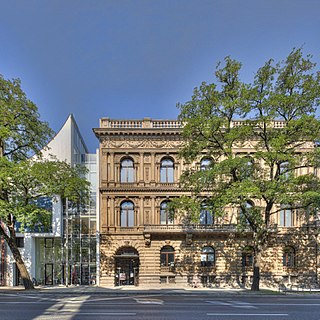Self-guided Sightseeing Tour #1 in Aachen, Germany
Legend
Guided Free Walking Tours
Book free guided walking tours in Aachen.
Guided Sightseeing Tours
Book guided sightseeing tours and activities in Aachen.
Tour Facts
8.3 km
155 m
Experience Aachen in Germany in a whole new way with our free self-guided sightseeing tour. This site not only offers you practical information and insider tips, but also a rich variety of activities and sights you shouldn't miss. Whether you love art and culture, want to explore historical sites or simply want to experience the vibrant atmosphere of a lively city - you'll find everything you need for your personal adventure here.
Individual Sights in AachenSight 1: Westpark
The Westpark is a park in the west of Aachen, which is bounded by Gartenstraße, Welkenrather Straße and Vaalser Straße.
Sight 2: Alter Jüdischer Friedhof
The Jewish Cemetery Aachen is located in Aachen in North Rhine-Westphalia. It is on the corner of Lütticher Straße and Körnerstraße.
Sight 3: Lavenstein
The Lavenstein was a defensive tower of the outer city wall of the city of Aachen, which was built around 1300 to 1350. It is one of the few surviving towers of the former city fortifications.
Sight 4: Roskapellchen
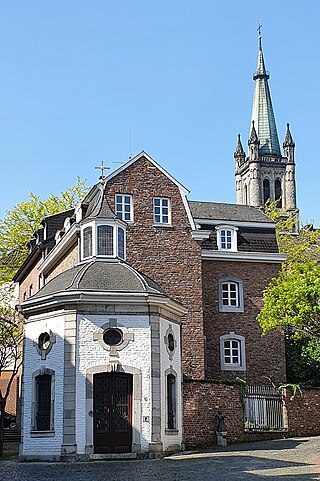
The Roska Chapel is a listed chapel building in Aachen not far from the parish of St. Jakob and is used for the veneration of the Mother of God. It was built in 1758/1759 in the Baroque style as a replacement for a previously free-standing wayside shrine, into which a figure of the Virgin Mary from the early 16th century had been integrated. The chapel building is attributed in many sources to the Aachen master builder Laurenz Mefferdatis, but the cathedral master builder Joseph Buchkremer lists it as the work of Johann Joseph Couven. The "Roskapellchen" owes its name to the surrounding residential district, although it is not clear whether the name "Ros/Rues" is the name "via rotta" from Roman times or a reference to a nearby flax roast.
Sight 5: Alexianerkloster Aachen
The Alexian Monastery in Aachen is the mother house of the Alexian Brothers on the Alexianergraben in Aachen, the first documented mention of which dates back to 1391. The current building complex there consists of the convent building (Clemens Building) with the St. Alexius Church and the rear wings of the adjoining Alexian Hospital (Quirinus Building). The Clemens Building with the church was rebuilt in 1929 according to plans by the Düsseldorf architect Wilhelm Pauen (1865–1949) and was placed under monument protection in 1980.
Sight 6: Barockfabrik
The Barockfabrik is a cultural centre under the municipal sponsorship of the city of Aachen. The state-approved vocational school for: acting • directing • musical, Aachen Theatre School, the Öcher Schängchen City Puppet Theatre, the dance workshop Art bewegt and Café Couleur are located here.
Sight 7: Öcher Schängche
Öcher Schängche is a puppetry theatre in Aachen, North Rhine-Westphalia, Germany. It was founded by Will Hermanns and others in 1921.
Sight 8: THEATERSCHULE AACHEN E.V.
The Aachen Theatre School for Drama • Direction • Musical is a supplementary school for theatre and film. It is based in the rooms of the Barockfabrik, a cultural center sponsored by the city of Aachen.
Sight 9: Wylre'sches Haus
The Wylre'sche Haus in Aachen is a listed representative residential building at Jakobstraße 35. It takes its name from the forester, alderman and multiple mayor of the imperial city of Aachen, Johann Bertram von Wylre, who had it built in 1669 after the purchase of several plots of land. Since it was taken over by the Aachen branch of the Hoesch/Heusch family, it has also been referred to in literature and in the vernacular as Haus Heusch or Palais Heusch because of its furnishings.
Sight 10: St. Paul
The Church of St. Paul in Aachen is a former Dominican church and later a Roman Catholic parish church. It was profaned in 2009 and has housed the Diocesan Archive of the Diocese of Aachen since 2018. The outer building, destroyed and rebuilt several times, preserves the character of the Gothic mendicant order church. The interior has been modernly redesigned.
Sight 11: Wehrhafter Schmied
Wehrhafter Schmied is a fountain monument in Aachen designed in 1909 by the Aachen sculptor Carl Burger and created by the Düsseldorf ore foundry Bernhard Förster. It shows the figure of a blacksmith who, according to the legend The Blacksmith of Aachen, is said to have slain Count Wilhelm IV of Jülich.
Sight 12: Archäologisches Fenster
The Archaeological Windows in Aachen are showcases or viewing windows in the public space of Aachen's old town or in buildings that are at least temporarily open to the public or visible, in which historically important archaeological finds from Aachen's city history can be viewed at the place where they were found.
Sight 13: Zum Güldnen Verken
The Marianneninstitut was a maternity ward for poor women who had recently given birth in Aachen and the first of its kind in Prussia. The institute was founded in 1830 by the Aachen gynecologist and obstetrician Vitus Jakob Metz (1792–1866) and recorded more than 40,000 births by the time it closed in 1959. It was named after Princess Marianne of Prussia, the wife of Prince William of Prussia.
Sight 14: Augustinerplatzbrunnen
Der Augustinerplatzbrunnen ist ein Brunnen auf der Augustinerplatz genannten Platzanlage zwischen Kockerellstraße - Judengasse und Annuntiatenbach in Aachen, wo sich bis 1802 das Augustinerkloster Aachen befand.
Sight 15: Centre Charlemagne
The Centre Charlemagne – Neues Stadtmuseum Aachen is the local history museum of the city of Aachen. It received its French name after Charlemagne, the best-known and most important historical figure in Aachen; French was chosen instead of German because of the prominent position of the French language in the Eurégion Meuse-Rhin and EU.
Sight 16: Karlsgarten
The Karlsgarten at Aachen City Hall is a herb garden with a selection of plants from Charlemagne's Capitulare de villis in Aachen. It was created in 1965. It is located on the south side behind the western tower of Aachen Town Hall at Katschhof. It is one of several Karlsgärten in Germany, France and Austria.
Sight 17: Aachen Town Hall
Aachen Town Hall is a landmark of cultural significance located in the Altstadt of Aachen, Germany. It was built in the Gothic style in the first half of the 14th century.
Sight 18: Hühnerdieb
Hühnerdieb is a fountain monument by the Berlin sculptor Hermann Joachim Pagels, which was unveiled at Christmas 1913 at the Aachen Hühnermarkt. It consists of the bronze figure of a chicken thief, which was mounted on a fountain bowl made of shell limestone. The figure shows the moment when the thief is astonished to discover that instead of the chicken, he has stolen a rooster, which crows and thus betrays him. However, the scene embodied in the figure is without historical precedent.
Sight 19: Haus Monheim
Haus Monheim is a listed building in the old town of Aachen. It was a residential and commercial building of the Monheim family of pharmacists and is one of the surviving works of Jakob Couven in Aachen. Today it houses the Couven Museum and is registered as an architectural monument in the Aachen list of monuments.
Sight 20: Couven-Museum
The Couven Museum is a museum in the city centre of Aachen, western Germany. Since 1958, it is housed in the Monheim house, a 17th-century pharmacy, that was redesigned by the architect Jakob Couven in 1786. Several period rooms in Directoire, Empire and Biedermeier styles are on display, as well as the historic pharmacy, kitchen and a collection of faience tiles.
Sight 21: Haus zum Lindenbaum
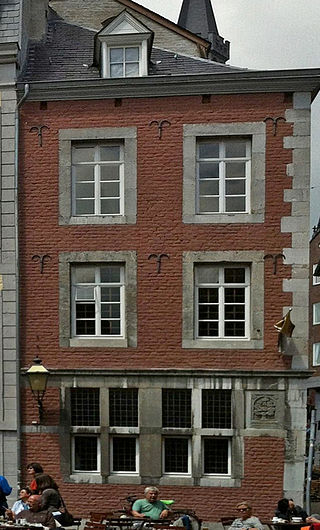
The Haus zum Lindenbaum is a former commercial and residential building in Aachen, Germany. It has been part of the Couven Museum since 1961. The building is a listed building.
Sight 22: Domkeller
The Domkeller is a listed residential building in Aachen.
Sight 23: Haus zum Mohren
The Haus zum Mohren is a listed building in Aachen, Germany.
Sight 24: Puppenbrunnen
The Puppet Fountain is located in Aachen, North Rhine-Westphalia, on Krämerstraße, the connection between the cathedral and the town hall. It was donated by the Aachener Bank and created in 1975 by the Aachen sculptor Bonifatius Stirnberg.
Sight 25: St. Foillan
St. Foillan is one of the parish churches in Aachen, Germany. It is located in the pedestrian zone and is only separated from the cathedral by a narrow alley. It is the only church in the German-speaking world that bears the patronage of Foillan. This is considered an indication that the missionary work in the Aachen area took place from the west.
Sight 26: Aachen Cathedral
Aachen Cathedral is a Catholic church in Aachen, Germany and the cathedral of the Diocese of Aachen.
Sight 27: Vinzenzbrunnen
The Vinzenz Fountain on Aachen's Münsterplatz is a fountain consecrated in 1847, which was created by the Aachen sculptors Wilhelm Josef Wings and Gottfried Götting according to a design by the then Aachen city architect Friedrich Joseph Ark.
Sight 28: Domschatzkammer
The Aachen Cathedral Treasury is a museum of the Roman Catholic Diocese of Aachen under the control of the cathedral chapter, which houses one of the most important collections of medieval church artworks in Europe. In 1978, the Aachen Cathedral Treasury, along with Aachen Cathedral, was the first monument on German soil to be entered in the List of UNESCO World Heritage Sites. The treasury contains works from Late Antique, Carolingian, Ottonian, Staufen, and Gothic times. The exhibits are displayed in premises connected to the cathedral cloisters.
Sight 29: Paradiesbrunnen
The Paradise Fountain is a fountain created in 1897 by Georg Frentzen in Aachen in the cloister of Aachen Cathedral.
Sight 30: Fischpüddelchen
Fischpüddelchen is a fountain monument originally erected in 1911 by Hugo Lederer in front of the baptistery of Aachen Cathedral at the fish market in Aachen. The figure was melted down during the Second World War and recreated in 1954 according to the destroyed model of Heinrich-Clemens Dick. The fountain is a modified copy of the Fischerbuberl fountain by the sculptor Ignatius Taschner, built in 1910 and now standing on Wiener Platz in Munich.
Sight 31: Grashaus
The building at the fish market in Aachen, known as the Grashaus, is not only one of the oldest houses in the city, but also of historical importance as the first Aachen town hall. It was completed in 1267, but probably stands on even older foundation walls from possibly Carolingian times. The Grashaus owes its name to the grass, a medieval village green where executions as well as folk festivals and supposedly the funerals of the executed took place.
Sight 32: Türelüre-Lißje-Brunnen
Türelüre-Lißje, also Turelure-Lieschen or Türelüre-Loetche, is the name of a legendary Aachen figure, to whom a fountain monument by the Aachen sculptor Hubert Löneke, which has stood at the entrance to Klappergasse since 19 November 1967, is dedicated.
Sight 33: Annakirche
The Protestant St. Anne's Church is a former monastery church in Aachen, Germany. Since 1802 it has been a Protestant place of worship.
Sight 34: St. Michael (Dimitrios)
.jpg)
St. Michael's is a church in Aachen, Germany. It was built as a church of the Aachen Jesuit Collegium in 1628, later it was a Catholic parish church and is now a church of the Greek Orthodox Metropolis of Germany. The official name today is Church of Archangel Michael – St Dimitrios.
Sight 35: Kreislauf des Geldes
The Cycle of Money is a fountain in Aachen created in 1976 by Karl-Henning Seemann. It is located in Hartmannstraße at the end of the Elisengarten. The fountain, which is financed by the Sparkasse Aachen, is usually called Geldbrunnen in short. In 2007, the fountain figures were renovated.
Sight 36: Elisengarten
The Elisengarten is a small park in the city center of Aachen on the rear side of the Elisenbrunnen. The Elisengarten was laid out between 1852 and 1854 according to plans by the Prussian master gardener Peter Joseph Lenné.
Sight 37: Elisenbrunnen
The Elisenbrunnen fountain in Aachen is a classicist building designed by the architects Johann Peter Cremer and Karl Friedrich Schinkel. The construction was carried out by the Aachen private master builder Andreas Hansen. The building was named after the Prussian Crown Princess Elisabeth Ludovika of Bavaria (Elise), the daughter of the Bavarian King Maximilian I, wife of the later Prussian King Frederick William IV. Her bust was made of Carrara marble by Christian Friedrich Tieck in 1828 and placed in the rotunda in 1832.
Sight 38: Schwimmhalle Elisabethstraße
The Elisabethhalle is a municipal indoor swimming pool in Aachen, Germany, located at Elisabethstraße 10, not far from Aachen Cathedral. It was built from 1908 to 1911 in Art Nouveau style for a total of 900,000 marks and opened on 17 July 1911. The design came from the Aachen city architect Joseph Laurent. The Elisabethhalle is one of the few surviving indoor swimming pools from the Art Nouveau era that are still in operation today.
Sight 39: Theater Aachen
Theater Aachen is a theatre in Aachen, Germany. It is the principal venue in that city for operas, musical theatre and plays. It is the home of the Sinfonieorchester Aachen. The original project was by Johann Peter Cremer, later altered by Karl Friedrich Schinkel. Construction on the original theatre began in 1822 and it opened on 15 May 1825. A bomb attack on 14 July 1943 destroyed the first theatre, and the current structure was inaugurated on 23 December 1951 with a performance of Richard Wagner's Die Meistersinger von Nürnberg.
Sight 40: St. Marien
St. Mary's Church is a Roman Catholic branch church in the south of Aachen's city center in the immediate vicinity of the main train station. Since 2010, the church has belonged to the large parish of Franziska von Aachen.
Sight 41: Henger Herrjotts Fott
The crucifixion group Henger Herrjotts Fott (Behind Herrgotts Gesäß), actually Osen Herrjotts Hazz (Our Lord's Heart), is a bronze sculpture by Bonifatius Stirnberg. It was erected on 27 August 1989 in Aachen as a replacement for a stone crucifixion group that had been lost in 1941 in the turmoil of the Second World War. It is located on a square between Wirichsbongardstraße and Schildstraße, which in 2003 was given the official postal address "Henger Herrjotts Fott" in allusion to the surrounding district of the same name.
Sight 42: Grenzlandtheater Aachen
Grenzlandtheater Aachen is a theater in Aachen, North Rhine-Westphalia, Germany founded by actor Kurt Sieder (1899–1964) in 1950.
Sight 43: Kugelbrunnen
The Kugelbrunnen is a fountain created in 1977 by Albert Sous in Aachen, Germany.
Sight 44: Denkmal Kaiser Friedrich III.
The Kaiser Friedrich Monument in Aachen stands on Kaiserplatz. Erected in 1911, the monument in the form of an equestrian statue is dedicated to the German Emperor Frederick III, also known as the 99-Day Emperor.
Sight 45: St. Adalbert
The Provost's Church of St. Adalbert in Aachen was the collegiate church of a collegiate monastery and was consecrated in 1005. This makes it the second oldest church in the city after Aachen Cathedral. St. Adalbert is located directly on today's Kaiserplatz and is dedicated to Adalbert of Prague, who was canonized in 999.
Sight 46: Adalbertsturm
The Adalbertsturm was a defensive tower of the outer city wall of the city of Aachen, which was built between 1300 and 1350.
Sight 47: Villa Cassalette
The Villa Cassalette is a former residential building in Aachen, Wilhelmstraße 18, which was built in 1883–1888 as a city palace in the historicist style of the Neo-Mannerism according to a design by the Aachen architect Eduard Linse. The building now houses the Suermondt-Ludwig Museum and is a listed building.
Sight 48: Suermondt-Ludwig-Museum
The Suermondt-Ludwig-Museum is an art museum in Aachen, Germany. Founded in 1877, its collection includes works by Aelbrecht Bouts, Joos van Cleve, Anthony van Dyck, Otto Dix and Max Beckmann.
Share
How likely are you to recommend us?
Disclaimer Please be aware of your surroundings and do not enter private property. We are not liable for any damages that occur during the tours.
GPX-Download For navigation apps and GPS devices you can download the tour as a GPX file.
